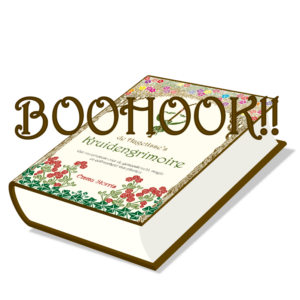
Did you know that sweet, soft confectionery that you can buy in shops under the name Marshmallow used to be made from the root of a plant? That plant, unsurprisingly, goes by the name marshmallow, Althaea officinalis. It belongs to the mallow family and has the same typical schizocarps that we see in the rest of that family.
Marshmallow has great healing power. Its medicinal properties act mainly on the mucous membranes in and on our body, due to the mucilages it contains. Think, for example, of the respiratory tract, the digestive tract and the skin. Few people know about its positive effect on the urinary tract and weight loss.
The magical properties of marshmallow cover two areas that seem contradictory. Firstly, you can use this plant for libido and erection problems. In addition, folklore tells us about several customs around funerals and the deceased.
Furthermore, marshmallow protects against magical or non-magical evildoers and attracts entities with good intentions. It also stimulates divinatory qualities.
Just about every part of this plant is edible. I already mentioned the sweet delicacy that you can make from the root. Incidentally, there is no actual marshmallow root to be found in the marshmallows that we buy in most shops these days. Of course, that does not mean you could not make them yourself.
Marshmallow, which dies back every year in winter and comes back to life again in spring, grows to an average height of 1.5 metre. Some plants even reach heights of up to two metres. This plant takes up quite a bit of space.
Marshmallow grows on a fleshy white to yellow taproot. The downy haired stem does not display much branching. The grey-green leaves are located along the stem on their petioles. The leaves are velvety to the touch and are acute ovate with three to five shallow lobes. The leaf margin is dentate.
Marshmallow has white to pink flowers that are located in the axils of the leaves and can measure up to 5 cm in diameter. The flowers have five petals and many stamens with yellow or purple anthers. After flowering, the well-known cheese-shaped schizocarps appear. It contains dark-coloured, sickle-shaped seeds.
Marshmallow is one of the plants that Charlemagne ordered every monastery to grow in their gardens.
Together with juniper, liquorice, bearberry and fennel, it is part of vijfsoortenthee, which literally means five species tea. This is a herbal mix that was traditionally used against urinary tract problems.
Marshmallow is also called tooth root in the Netherlands because people used to give teething children a piece of peeled marshmallow root to chew to prevent pain.
If you reduce the water in which the root was boiled, you can use the resulting substance as glue.
You can make varnish with the oil from the seeds.
According to the Romans, consuming a spoonful of marshmallow kept disease away for a day.
Basic membership is free. A plant monograph contains:
It's not allowed to copy content of this website
and view hidden content
